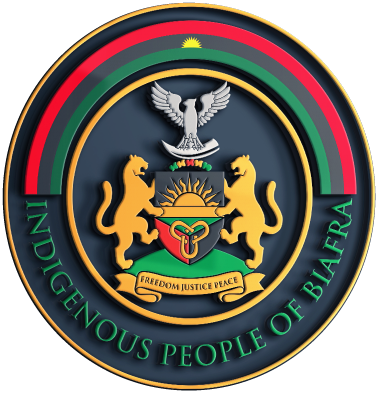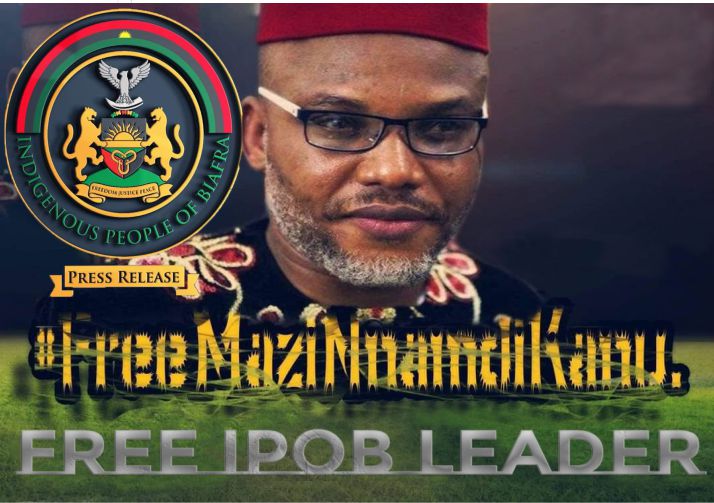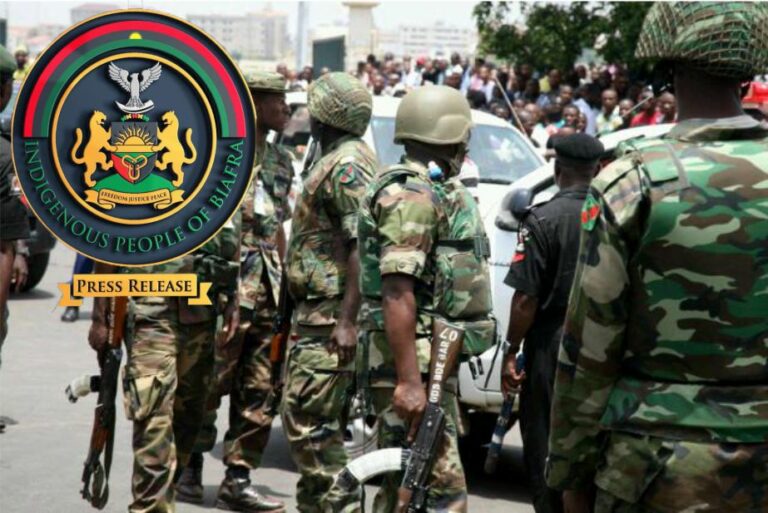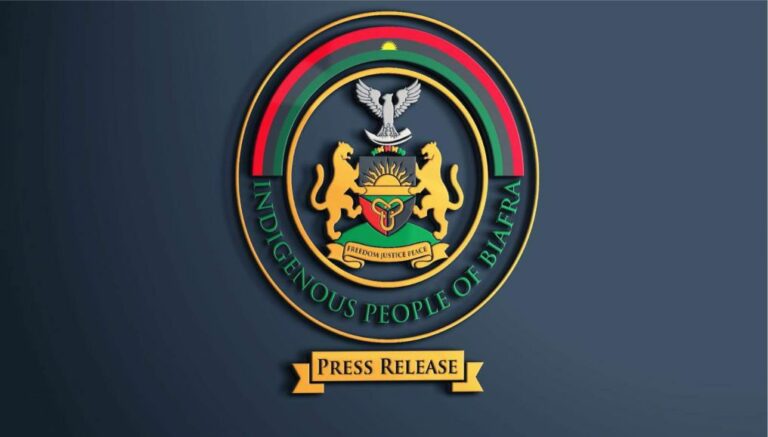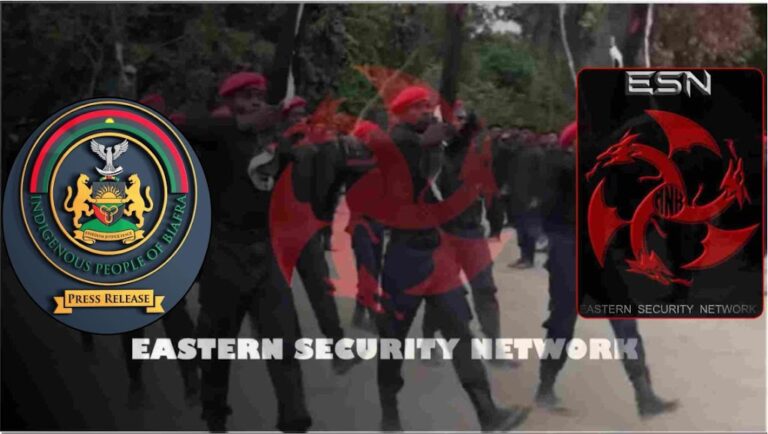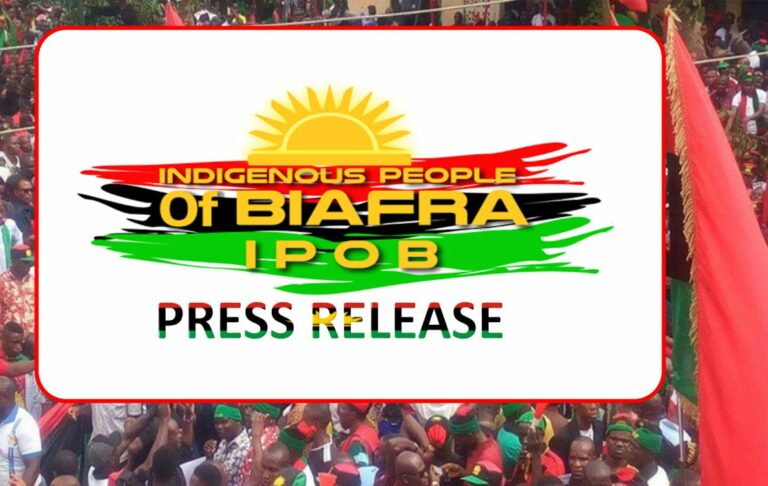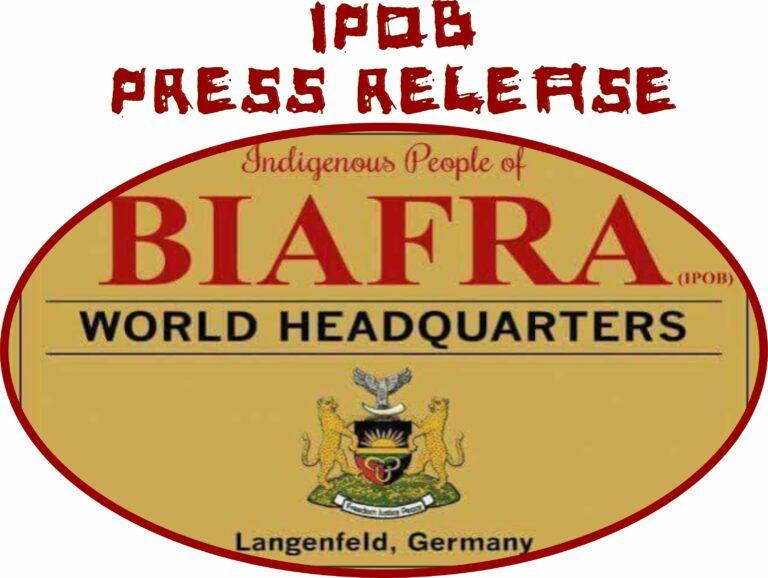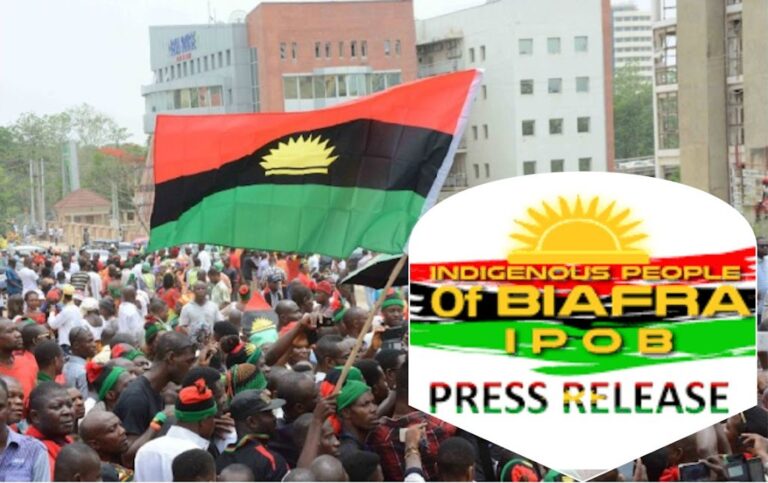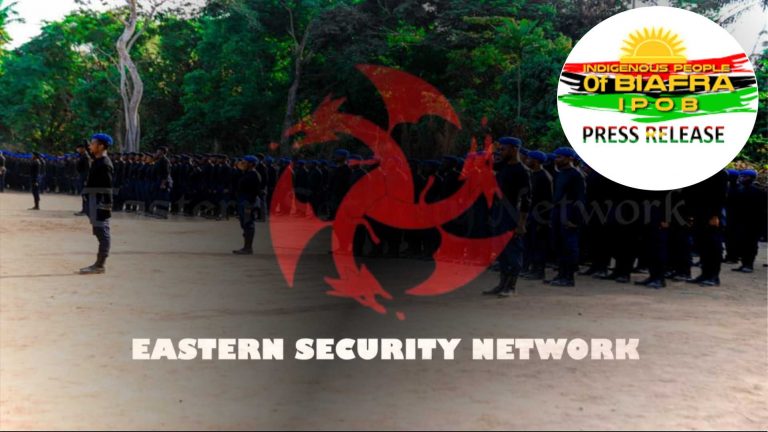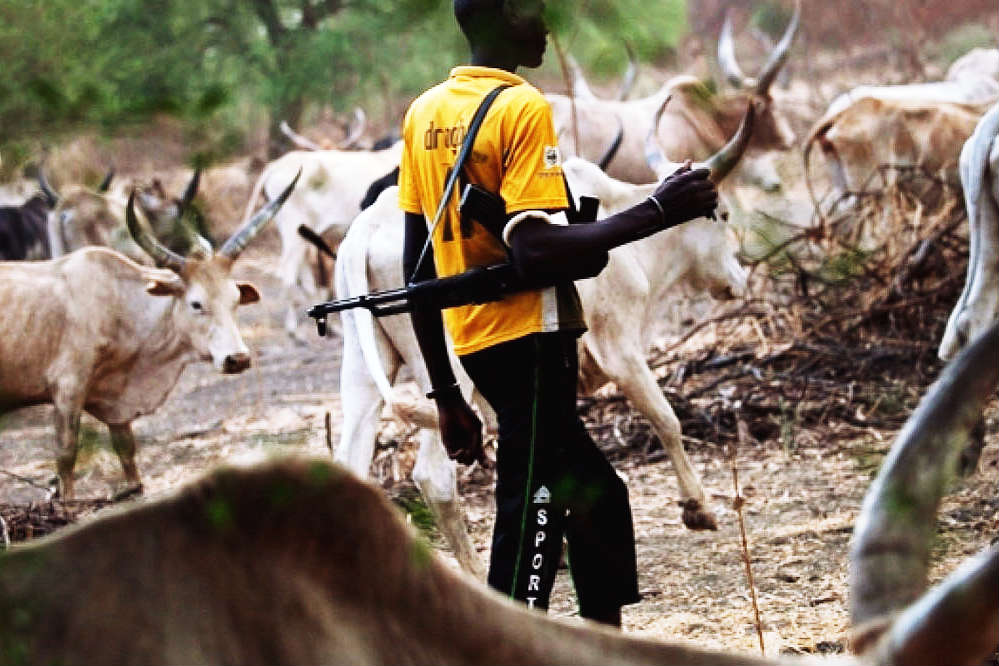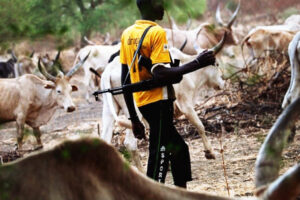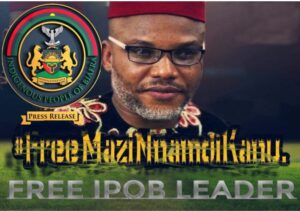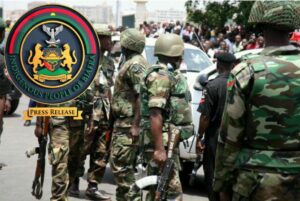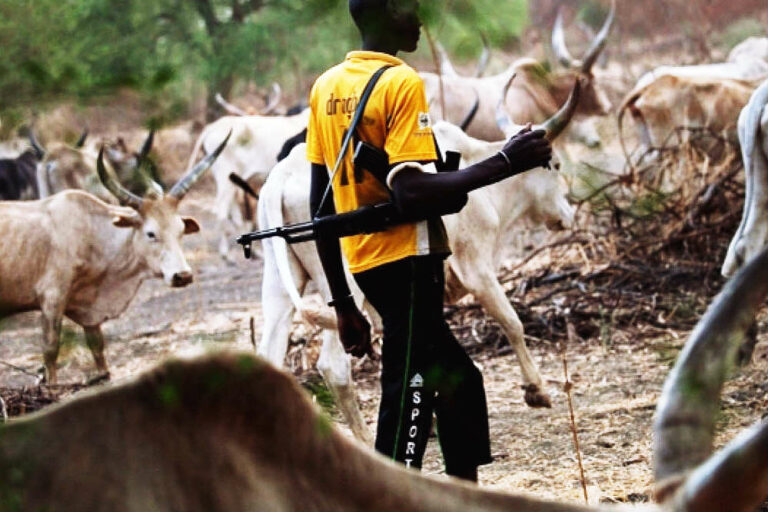Biafran Army Offensive To Clear Owerri
Our minor successes on the Owerri front since the clearance of Oguta and Egbema oil fields, had been encouraging enough to tempt me into doing something better organised on a larger scale. In addition to pushing the enemy back all the way from Inyiogugu to Amafor on the left flank of Owerri, we had also, on the right, pushed him further south from Egbema to Ebocha bridge. As a result of these successful flank operations, the enemy inside Owerri thinned out quite considerably to protect those flanks. Having taken these facts into consideration, I decided to start an operation to clear Owerri town.
At this time our troops around Owerri included the 60 Brigade under Colonel Asoya, which, with a strength of about 1000 armed men, had the responsibility of defending the whole area between Owerri-Ihiala road and Owerri-Port Harcourt road. There was the 52 Brigade roughly of the same strength, under Colonel Chris Ugokwe, whose responsibility it was to defend from Owerri-Ihiala to Owerri-Umuahia road. The Third Brigade of the 14 Division, the 63 Brigade under the command of Colonel Lambert Ihenacho, protected the entire Division left flank stretching from Owerri-Umuahia road down to the Imo River. In addition, the “S” Division sent up a battalion reinforcement which was concentrated in Emekuku near Owerri, for the proposed offensive. This battalion, called the 68 Battalion, was under the command of Major Ikeji and was to operate independently but in support of the 14 Division. With the forces available and our limited resources, I did not expect to immediately drive the enemy out of Owerri. I however realised that if we could prevent him from getting reinforcements and supplies, we could in our own time, wear him down gradually until he lost the will to fight. The overall plan for dealing with Owerri was therefore geared towards achieving that aim.
The task of surrounding Owerri and gradually destroying the enemy inside it was going to be a gigantic one, and would take a very long time, considering the fact that ammunition supply to the troops was normally small and most irregular. For that reason, the whole operation was divided into three major phases. The aim of the first phase was to box in the enemy on all sides as much as possible into Owerri town, and sever all his routes to the rear except for the Owerri-Port Harcourt main road. It was necessary to leave that major line of communication open for the enemy, otherwise we would scare him too soon, and compel him to take necessary precautions before we were fully prepared to deal the final blow. For that phase, 52 Brigade was to push enemy back in all its areas of responsibility to within one mile from Owerri. Its special tasks during that phase were to clear Egbu, Orji and Orogwe. 60 Brigade was to clear all areas right of Port Harcourt-Owerri road and then maintain a strong defensive line all along the side of that road from Irete on their left to UMuakpu on their right. In addition, the Brigade was to deny the enemy the use of Elele-Umudiogu-Ubimi road, thereafter. The 68 Battalion of “S” Division had the task of moving through the left flank of 63 Brigade to clear all areas held by the enemy on the left side of Port Harcourt-Owerri road between Naze and Umuakpu. The 63 Brigade was to remain in its defensive positions but prepared to provide reinforcements for places where they were needed for exploiting success.
On the successful completion of the first phase, we expected to see the enemy concentrate heavily inside Owerri town, and thereafter having as his only link to the rear the main Port Harcourt road. On our side, we expected to find our troops who were widely dispersed in defensive locations, better concentrated and in a position to operate more effectively. If and when that happened, it would then be the signal for the beginning of the second phase of the operation.
In the second phase, the sole aim was to move swiftly in strength with all that was available and seize the Port Harcourt road between Avu and Umuakpu, and thus seal off Owerri. During that phase 60 Brigade was to move to take Obinze and Avu and link up both towns and exploit southwards to Mgbirichi where they would join up with 68 Battalion elements. The 68 Battalion itself was expected to seize the thinly defended towns of Umuakpu and Umuagwo and, having linked them up, was to move northwards to Mgbirichi to make contact with 60 Brigade. It was clearly obvious that if the second phase was successful the reaction of the enemy inside Owerri would be very violent indeed. For that reason, the task of 52 Brigade during that phase was merely to prepare troops to beat back enemy counterattacks both in 60 Brigade and 68 Battalion areas
The third and final phase of the operation was descend on encircled enemy inside Owerri and destroy him while preventing him from breaking through southwards. For the final phase, the 60 Brigade was to clear the right half of the town up to the clock tower, the 52 Brigade was to tackle the left side of the town while the 68 Battalion was to defend the Port Harcourt-Owerri road and flanks right and left of it.
It was a very ambitious plan based entirely on optimism, for its success depended mainly on the amount of material and administrative support that would be made available. With the scarcity of food, troops were expected to harvest wild cassava, yams and vegetables and augment the Food Directorate supplies. It was in their interest that they did all they could to clear their objectives if for no other reason, but to be able to harvest abandoned crops in enemy held areas. On the issue of ammunition, which was what mattered most, the Head of State promised and later issued the following ammunition to all troops taking part for the first one week of the operation — 50,000 rounds of small arms ammunition, 200 rounds of 105 mm artillery shells, 300 rounds of mortar bombs, 20 rounds of anti-tank rockets, grenades and other smaller items. 14 Division Commander Kalu, wanted the whole ammunition for a period of one week issued to him in bulk to ensure that his operations were not interrupted by frequent ammunition shortages. Ojukwu turned the request down and preferred to issue on daily basis to ensure that the week’s quota was not exhausted in less than a week. Ojukwu later told me that he did not even have that amount of ammunition, but had based his allocations on what he expected to receive every night during the week of the operation.
On the 3rd of December, the 63 Brigade launched a two-pronged limited offensive against Elelem and Eziama as a part of a diversionary plan to occupy enemy’s attention. The main Owerri offensive started in earnest in all sectors at 0700 hours, 5 December, 1978. 60 Brigade moved with a battalion each on three fronts. On the left, a battalion moved to clear Izombe and Obudi. From there, while a part of it moved to clear Ogbaku on the Ihiala road, the rest of the battalion moved to Ofogwe. From the centre, another battalion moved from the area of Okwuzu and Mgbede and took Obigwe and, shortly after, were in full control of Okuku. This particular move was so swift that the enemy Battalion Headquarters at Obudi did not realise for some time that it had been cut off together with most of the battalion sub-units. Thus, many enemy soldiers and vehicles which were either moving to Obudi or returning from there fell into our hands in the area of Okuku. The third battalion of 60 Brigade moving on both Ohoba-Umukanne road and Asa-Awarra road, took Umuakpu quite easily. Thus, in the first three days, the 60 Brigade had completed their tasks in the first phase, resulting in the clearing of several hundreds of square miles enemy occupied territory.
68 Battalion was equally successful in clearing all enemy held areas left of the Port Harcourt road down to Mgbirichi, thus establishing a permanent link with the 63 Brigade. The 68 Battalion success left us completely in control of all areas southeast of Owerri town down to Owerrinta bridge to a depth of about ten miles from the Aba-Owerri road. The 52 Brigade facing the enemy forward concentrations made only small gains as expected. Once or twice, they cleared Orji but lost it again. At the end of one week, the first phase was considered to be over and the results, particularly in 60 Brigade area were very encouraging.
A considerably large quantity of arms and ammunition was captured, even though most of the weapons were damaged and the bulk of the ammunition was of a calibre useless to us. Because of the rapidly decreasing quantity of ammunition available to us for the operation, I decided to execute the second phase with only one brigade fighting at a time, and as soon as its objectives were completely attained, the next brigade or formation would start. For that reason, the 60 Brigade started off by clearing Avu and Obinze while other formations remained in defence. Both towns fell and were linked up but by the end of the day we had lost them again following an enemy armoured assault on both towns from Owerri. For a couple of days, we put in a series of attacks on both towns but the enemy invariably managed to push us out despite his loss of an armoured personnel carrier, a ferret armoured car and many men during these battles.
The enemy in Owerri had very good reasons to be desperate because the International Team, which observed atrocities, was trapped inside Owerri town and had to be got out if they were to continue “observing.” After about seven days of unsuccessful operations against Avu and Obinze. I became quite sure that we would not succeed in sealing off Owerri from that area. Avu was too close to the enemy concentration in Owerri and therefore attracted a swift and immediate counterattack from him any time the town was threatened. It therefore became necessary to look for a point along the Port Harcourt road which would be far enough from Owerri to discourage the enemy from journeying all the way from Owerri to counterattack. Even if he did that, it would be after we should have had enough time to dig in properly to resist his attack more effectively. In that case, he would be overstretching himself. In a modified plan for phase two, the 60 Brigade therefore moved further down to attack and capture Umuagwo and Umuakpu from Umukanne on their right, while 68 Battalion was to attack Obinze.
The operation started on the 6th of January with immediate tremendous success. The enemy at Umuakpu and Umuagwo was quickly rounded up and destroyed and his stores and equipment captured. The going was so easy for us at Umuakpu that our force that took it moved further down and also took Omanelu, thus threatening Elele 35 miles south of Owerri. Due to difficult terrain, the 68 Battalion was rather slow moving up to Obinze but later, with the assistance of our troops who had moved northwards from Umuagwo through Mgbirichi, Obinze was also taken. Throughout the battle there was very little reaction from the enemy inside Owerri except when we tried to move from Obinze to Avu. Then he grew very violent and we went back to Obinze.
By the end of the day we were controlling over 20 miles of the road which was before then the last link between Owerri and Port Harcourt, thereby having the enemy brigade at Owerri completely surrounded. In order to ensure that the enemy on both sides of the corridor did not link up ever again, we used several hundreds of civilians to render that stretch of road absolutely impassable using mines, ditches and heavy trees felled across the road. Thereafter, the 68 Battalion which had grown gradually and been renamed the 68 Brigade, took charge of the defence of the Port Harcourt road (inclusive) westwards to 63 Brigade, while the 60 Brigade defended eastwards to Orashi River.
From the 8th of January, 1969, the enemy began his counterattacks to reopen the road. These attacks, which came from the Port Harcourt end, persisted for several months unsuccessfully until we cleared Owerri town itself.
For the success of the third and final phase, which was to clear Owerri town, our greatest hope lay not so much on our strength as on the happy thought that if we attacked the enemy in Owerri with determination for long, he would run out of ammunition and give up further resistance. For that reason, the prevention of the enemy from breaking through into or out of Owerri was even more important at that stage than trying to clear the town in a hurry. The troops taking part were now getting increasingly tired despite their high morale, due to the steadily deteriorating state of supply and administrative backing generally. Sickness in the war front was on the increase as a result of hunger and exposure, but we had no other alternative but to continue with the operation to the end.
On the 15th of January, therefore, the final phase began. 60 Brigade moved to clear the Holy Ghost College, the Cathedral and the Progress Hotel. On the successful completion of those tasks the Brigade was expected to wheel right and mop up the enemy up to the Clock Tower, and the neighbouring Motor Park. The minimum the Brigade was expected to achieve was at least to get to the small bridge on the Otamini River adjacent to the Holy Ghost College and blow it up. That achievement would prevent the enemy from using his vehicles beyond the centre of the town in any attempt by him to move southwards.
As soon as we struck, the enemy in the Holy Ghost College and the Cathedral fled into Owerri town centre, abandoning large quantities of ammunition, food and clothing. Instead of keeping up with the chase down to the Oramini bridge and from there into the town, Biafran troops, hungry and naked, halted to eat and evacuate enemy abandoned food, and also to change into the newly captured uniforms. In the confusion and excitement thus created, it was virtually impossible to retain control of the men to enable us to push on, despite desperate efforts in this direction by all senior commanders. While this confusion persisted, the enemy quickly counter attacked, and took good advantage of the confused and disorganised state of Biafra troops to dislodge us from the captured grounds. We were soon back in our trenches after having lost gained grounds.
For the next one month, we launched several attacks a week, still hoping that the enemy there would eventually run out of ammunition. In the meantime, from the direction of Port Harcourt, enemy daily attempts to break through to Owerri had developed into a major brigade operation. From Elele, the enemy was pushing northwards desperately for several weeks on both Omanelu-Umuakpu and Elele-Ubimini-Awarra roads. We fought him back with equal determination, but he was still gaining ground slowly but steadily. By the end of March, the enemy was at Umuakpu on the main axis and at Asa on the right flank. That was a considerably alarming situation for us because Asa was less than 20 miles from Owerri.
Meanwhile, inside Owerri, the enemy was clearly in trouble after over two months of complete isolation within the town. All wireless intercepts confirmed that fact. Reconnaissance reports also showed that the enemy was so short of food that he was compelled to kill most of his Biafran prisoners of war and civilian detainees inside Owerri because there was not sufficient food with which to feed them. After two months of daily promises of a link-up by Port Harcourt had failed, the enemy resorted to air dropping ammunition and food. What was left under enemy control in Owerri was so small that most of what was dropped fell into Biafran hands.
Any Biafran unit around Owerri which wanted something dropped for it by the enemy, only needed to clear a bit of bush, spread a white sheet of cloth over the clearing, and he would get a drop. Unfortunately, due to gross inefficiency of the enemy air-drop operations, the very large quantity of ammunition we acquired through it was almost all damaged and therefore useless to the Army. Gun powder was however laboriously extracted from the damaged ammunition for use by the BOFF and other civil defence organisations. As a result of enemy air drops, the 14 Division was for some time fairly well fed and thus became fitter for its operations.
On the 15th of March, following a detailed review of the Owerri operations, during which much consideration was given to the pathetic and desperate state of the enemy in Owerri, Colonel Ojukwu and I decided to put in a last spirited effort to clear the town. Fresh supplies were said to have come into Biafra a few days before by air and Colonel Ojukwu was willing to make generous grants in support of the effort. Besides issuing ammunition, he made available 960 bolt action rifles. These weapons he said, would be used to reinforce the “S” Division so as to enable them to move two more battalions’ and the Division Headquarters from Aba to Owerri for the operation. It was hoped that, in the long run, the whole of “S” Division wherever they were, would concentrate in Owerri. In discussing a possible plan for the operations with the Head of State, I wanted the “S” Division to move to the area of 68 Brigade and from there, attack the enemy in strength from the rear. My argument was that the enemy was weakest there, and would be caught unaware if we attacked for a change from his rear as opposed to the usual frontal or flanking attacks.
The Head of State on the other hand wanted all available forces concentrated at Emekuku, and from there they would attempt to “smash” through the main road into Owerri to capture it. It was quite clear to me after 15 months of hard fighting experience that we stood very little chance of success if we attacked frontally because we lacked the punch necessary to break through Nigeria Army defences frontally. In the end, however, Ojukwu’s plan was adopted.
The “S” Division troops under Colonel Onwuatuegwu, initiated the move and after several days of daily encounters, we failed to move the enemy while, at the same time, the ammunition available for the operation was running out rapidly. I was neither satisfied with the efforts of the Division as a whole, nor with the effectiveness of the Division Commander. He was often absent from his Division operational area during operations and, as a result, his troops lacked effective leadership and never kept to any timings. Worse still no detailed military instructions could be passed to his Division Headquarters in his absence because most of his staff were civilians with no military training or, at best, the usual four weeks training at the Biafran School of Infantry. For reasons best known to him, he seemed to prefer it that way.
With such a bad situation, Achuzia, who was often eager to prove his fighting ability, sought directly and obtained Ojukwu’s permission to take over a part of “S” Division and clear Owerri with it. Onwuatuegwu did not like that arrangement but had to obey the order. When Achuzia arrived, Onwuatuegwu reluctantly gave him his “S” Brigade under Major Atumaka but refused thereafter to co-operate with or render any further assistance to him. In less than 24 hours, Achuzia had broken through and cleared Egbu town and advanced to within a mile of Owerri town centre.
Achuzia’s success was achieved with heavy casualties on our men. Thus, when Achuzia wanted the rest of the Division placed under him so as to continue the offensive, the two officers began to quarrel to the extent of drawing pistols against each other. Even though all this happened in my presence, I had to take the two officers to Umuahia to see Ojukwu under whose direct command they were placed for the operation.
Ojukwu ruled that Achuzie should take command of the entire “S” Division for a week’s intensive operations while Onwuatuegwu took a rest. All subsequent operations by Achuzia did not succeed and resulted in very high casualties on our side including the “S” Brigade Commander, Major Atumaka. The Head of State therefore called off the operation, withdrew his material and administrative support, restored Onwuatuegwu to his command, and asked me to start all over again, this time using my own plan. Other major battles developing elsewhere made that impossible for some time.
Excerpts from The Nigeria Revolution and the Biafra War by Alexandra A. Madiebo
Published by:
Chibuike John Nebeokike
For: IPOB
